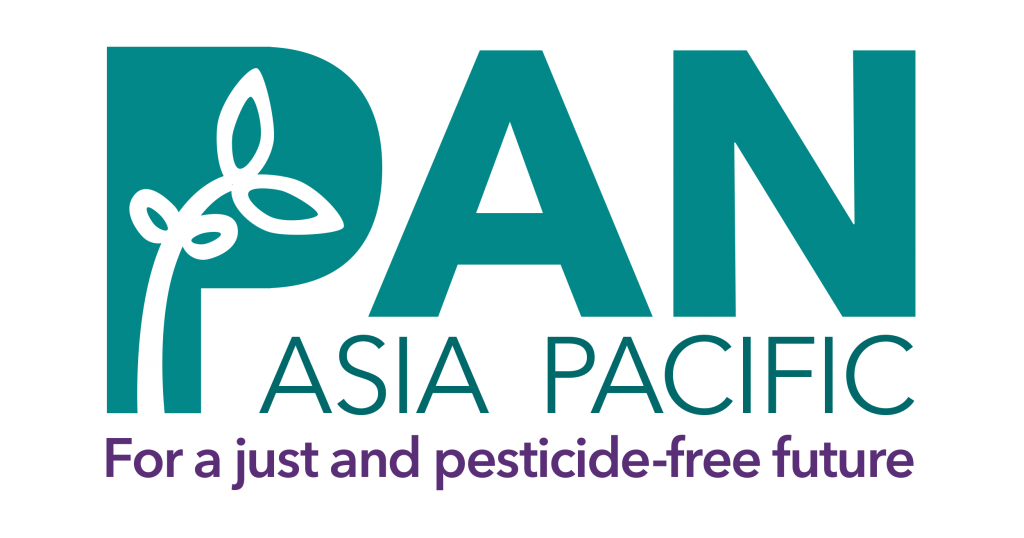Along with the climate crisis, the UN’s proposed Global Digital Compact recognises digital transformation as one of the “seismic shifts” of the 21st century. It thus aims to develop shared principles for an “open, free and secure digital future for all,” to be agreed upon by Member States at the upcoming Summit of the Future (SOTF).
The Global Digital Compact gives an impetus to digital solutions for achieving the Sustainable Development Goals (SDGs). This approach, however, risks exacerbating existing power imbalances in the agri-food sector, where big tech and agribusiness giants can leverage their existing technological advantages and resources to dominate the market further. Smaller farmers and rural communities may be forced to adopt digital systems they neither fully understand nor control, effectively ceding decision-making and data ownership to corporate entities.
Corporate and profit-driven digitalisation could further erode traditional farming knowledge and food sovereignty, including farmers’ ability to make independent choices about their livelihoods. Moreover, the push for increased data collection and sharing raises serious privacy concerns, even with safeguards that the compact aims to instil. Farmers and consumers may see their personal and operational data harvested, analysed, and monetised by large companies, often without meaningful consent or compensation. This data grab could lead to predatory pricing, manipulative marketing practices, and the further commodification of agriculture. Additionally, the compact’s digital emphasis may also sideline crucial non-digital solutions—including agroecological practices—and marginalise farmers who choose not to or cannot participate in this digital ecosystem.
‘Precision’ technologies that aim to ‘optimise’ chemical fertilisers and pesticides, such as drones and Artificial Intelligence (AI)-powered robotics, also do not fundamentally change dependence on harmful inputs, are costly, and may even pose greater health and environmental risks.
Finally, digital technologies are resource intensive. The AI boom has propelled the extraction of cobalt, lithium, nickel and rare earth minerals from land and sea beds, leading to the displacement of rural communities, land degradation, adverse impacts on people’s livelihoods, and toxic waste. However, discussions on the Global Digital Compact have not encompassed how extracting the critical minerals involved in digitalisation impacts people’s rights to land and resources.
Innovation for more agri-food corporatisation
None of these concerns are reflected in the UN Food Systems Summit’s (UNFSS) push for advancing agricultural technologies and digitalisation. These initiatives closely involve big businesses through the World Economic Forum (WEF), a co-lead of its Innovation Lever of Change. For instance, WEF’s Food Innovations Hub and Food Innovations Network involve major food, tech and pesticide companies (e.g. Bayer and UPL) and partners with governments to “accelerate fit-for-purpose technology and innovations to secure a positive food future.”
One of its pilot Hubs exemplifies how digitalisation secures big corporate interests instead. Supported by a World Bank loan, Vietnam’s One-Million Hectare Low-Emission High-Quality Rice Program is a public-private collaboration between Vietnam’s Ministry of Agriculture and Rural Development and business partners. These include digital payment provider Visa (for financial services), grain traders Olam Agri and Cargill (for rice procurement) and Bayer (for access to hybrid seeds and drone technologies through a partnership with IRRI). The program incorporates carbon farming, which involves registering land and farmers in carbon offsetting schemes. Under carbon farming, farmers are paid a certain amount for carbon credits generated from specific practices (including agrochemical companies’ definition of ‘regenerative’ agriculture) that supposedly store carbon in soils.
Critics argue that carbon offsetting is a form of greenwashing that allows polluting entities to avoid meaningful emissions reductions while creating an illusion of climate action. Unsurprisingly, carbon farming, a land-based carbon offset scheme, is being promoted and dominated by agrochemical companies that leverage the integration of digital technologies and carbon markets to expand their influence across the entire agricultural value chain. Offering income from carbon credits as an incentive allows them to collect and control vast amounts of farm data, giving them unprecedented insight into agricultural practices globally. By leveraging this data, these corporations can further consolidate their market power, potentially squeezing out smaller competitors and reducing farmers’ choices, ironically, to the same toxic, fossil fuel-based products.
For instance, Bayer’s ClimateView requires US farmers to input data that will allow them to get paid for carbon. The program recommends planting protocols using Bayer’s products, offers product discounts, and even offers Bayer products in lieu of carbon payments. Syngenta’s Cropwise™ Seed Selector uses AI to tailor seed recommendations from the company’s line of hybrid seeds. At the same time, its new digital tool—which aims to diagnose nematode infestations in soybean crops by analysing photographs taken from satellites—recommends using Syngenta’s new chemical nematicide and fungicide.
Digitalised supply chains
Indeed, the UNFSS Data and Digital Coalition’s Digital Marketplace Playbook—a “framework for leveraging digital and data innovation” with case studies from “emerging markets” in Latin America, Africa, and Asia—plays up the importance of private sector involvement in encouraging “data-driven, interconnected, digital innovation” for food systems. The Coalition’s founding members prepared the framework, including the WEF and Mercy Corps, an entity that develops “inclusive digital products and services” for smallholder farmers. WEF, BMGF, Bayer Foundation, and Google officials sit on the Advisory Council of Mercy Corps.
The Digital Marketplace Playbook highlights numerous benefits of digitalisation, such as improved market access, increased efficiency, and better decision-making tools for farmers. However, it also reveals a trend towards concentration of power in the hands of large tech and agri-food companies as the supply chain infrastructure is streamlined.
For instance, the case studies of Alibaba’s Taobao and Pinduoduo in China and Mercado Libre in Latin America demonstrate how e-commerce giants are becoming increasingly dominant in agricultural value chains. This could reduce farmers’ bargaining power and autonomy as these e-platforms become the primary gatekeepers to large consumer markets. The emphasis on AI-generated dynamic pricing and demand prediction, as seen in Europe’s Wasteless case study, could lead to increased market volatility and financialisation of agriculture in the guise of reducing food waste. Many e-platforms also specialise in providing farmers access to “quality inputs” and credit, such as DigiFarm in Kenya, which “helps agribusinesses and small holding farmers share information and transact more easily.”
Recipe for worse hunger
The UN’s vision of ‘transforming’ food systems and addressing climate change and other global crises through the UNFSS and related initiatives such as the SOTF reveals a deeply flawed approach that further entrenches corporate control over food and agriculture. Far from being a radical reimagining of our food systems, these efforts largely reinforce the same neoliberal, profit-oriented industrial agricultural model that has failed to address hunger and environmental degradation for decades and inevitably leads to an escalation of the food, health, climate, biodiversity and pollution crises. By framing solutions in terms of technological innovation, digitalisation, and market-based approaches, they ignore structural problems that have hindered genuine and sustainable rural development, especially in the Global South, where small food producers who feed the world most acutely suffer the inequities of current food systems.
The World Bank’s Recipe for a Livable Planet report projects that achieving ‘net zero emissions’ in the agri-food system would increase global agricultural production by 11.5% while reducing agricultural employment by 4.3% – equivalent to 101 million fewer farmers and farmworkers. This shift is attributed to a combination of new technologies and ‘green’ investments.
However, these projections raise important questions. Even if the productivity gains materialise, the past decades have shown that increased agricultural output alone does not solve world hunger. More critically, we must consider the human cost: What would become of the livelihoods and communities of those 101 million displaced food producers?
Radical shift for transformation
Instead, a radical shift toward a people-led transformation of food systems is urgently needed. This means centering the voices, knowledge, and rights of small-scale farmers, farmworkers, Indigenous peoples, and other rural peoples who have long been stewards of sustainable food production. True transformation must address the root causes of hunger and environmental destruction—primarily concentrated land ownership, imperialist plunder of land and resources, corporate domination in food and agriculture sectors, labour exploitation, and inequitable global trade regimes. Effective change necessitates dismantling these systems of control and inequality. In its place, we should prioritise strengthening peasants’ rights to land and resources, supporting community-led agroecological practices, and developing robust local food systems. These shifts can foster people’s food sovereignty and form the building blocks of genuine and sustainable rural development.
Climate action in agriculture must similarly be grounded in the experiences and solutions of frontline rural communities. Rather than carbon offset schemes and proprietary “climate-smart” technologies that benefit large corporations, we need policies that support smallholder farmers in adapting to climate impacts and transitioning to low-emission practices on their terms. This includes recognising and bolstering climate-resilient agroecological farming methods and ensuring that rural peoples have rights and control over land and productive resources.
On September 23, the Global Peoples’ Caravan for Food, Land, and Climate Justice (GPC) will organise the Forward Our Future: Summit for the Peoples’ Development Agenda to highlight the struggles and demands of rural peoples. The People’s Summit will culminate the various consultations, fora, and other actions that the GPC has organised since last year, which built on the outcomes of the Global People’s Summit for Just, Equitable, Healthy, and Sustainable Food Systems in 2021–the People’s Counter-Summit to the UNFSS. This time, the Rural Peoples’ Development Agendawill consist of rural peoples’ concrete policy demands and aspirations concerning the future of food systems, their right to land and resources, and call for climate justice.
Ultimately, transforming our food systems to address hunger and climate change is not primarily a technological challenge but a political one. It requires breaking free from ‘value chains’ tied to capitalist profiteering by global and domestic elites. Fundamentally, it necessitates reshaping rural and national economies by building democratic control over food systems. Only through the leadership of farmers, workers, Indigenous peoples and other rural food producers – those with the deepest stake in creating just, equitable, healthy and sustainable food systems – can we hope to forge the radical changes needed to nourish people and the planet. The future of food must be people-led, not corporate-driven. ###








Discussion about this post